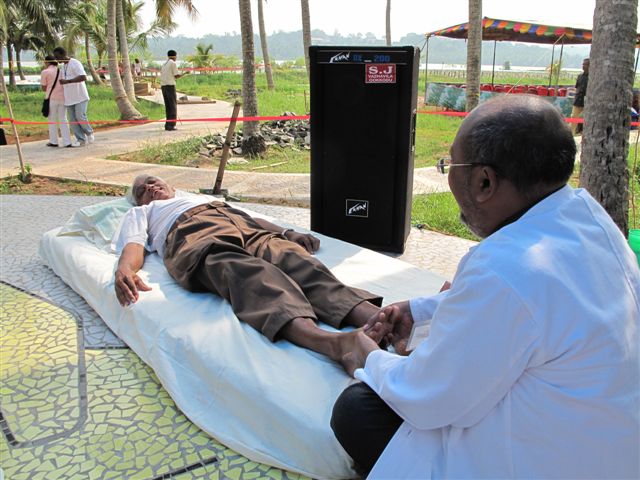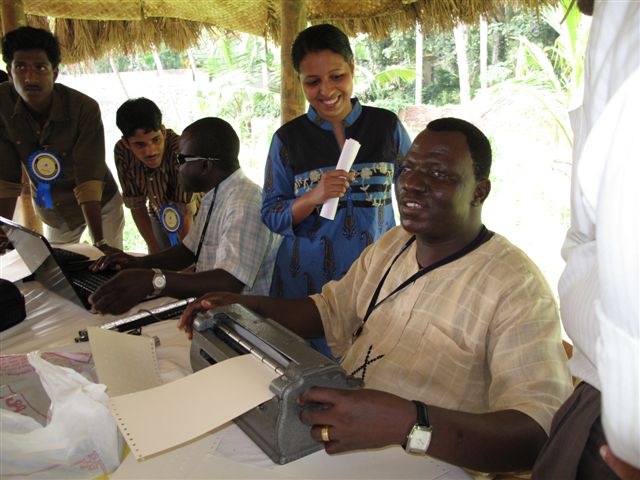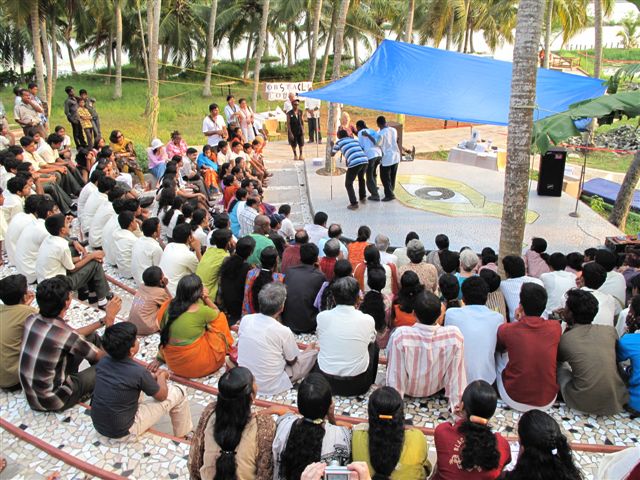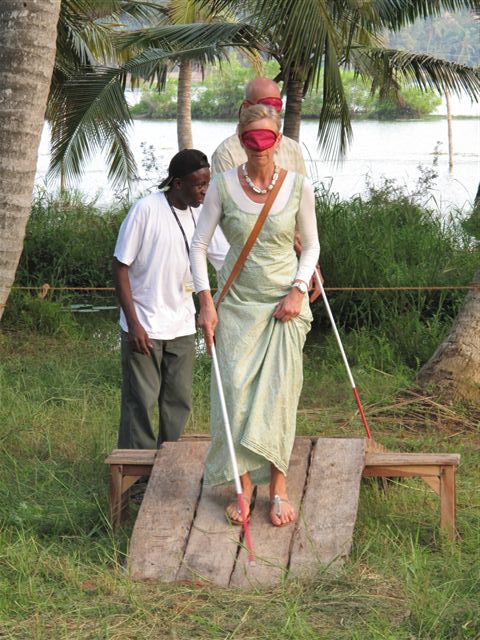
|
IISE
celebrates WHITE CANE DAY 2009
The Hindu, Saturday, Oct 17, 200 The
eyes have it The White Cane Day at IISE
was an eye-opener On White
Cane Day (October 15) at the International Institute for Social
Entrepreneurs
(IISE), Vellayani, visitors were given the opportunity to experience
first-hand
what it means to be visually-impaired. And what an eye-opener that was!
Willingly
blindfolding ourselves we felt, heard and smelled our way through an
obstacle
course, learnt the rudiments of Braille, played Topfschlagen (a
treasure hunt
while blindfolded), got professional foot and neck massages from Hosni
from
Saudi Arabia and Kyila from China – two enterprising visually-impaired
masseurs
and watched a hilarious skit presented by Mohammad from Sierra Leone,
Robert
from Kenya and Sahr from Liberia. Then, even without blindfolds, we had
to
grope our way to dine at the one-of-a-kind Café in the Dark. Profound
experience “You
would never realise how much of a battle mundane activities are for the
visually-impaired until you actually experience it for yourself,” say
Brigitte
and Hans Gehrge from Germany, who were seen enthusiastically
participating in
all the activities for the “seeing.” Navin Ramachandran, a well-wisher
and
part-time faculty member at IISE, adds: “It was indeed a profound
experience to
have all your faculties about you except your eyesight. But you realise
that
your other senses quickly take over and compensate for your eyesight.
For
instance, to get from the entrance of the Café in the Dark to
the table, my
feet, my hands and my mind became my eyes, with only the voice of Jessy
– our
visually impaired hostess – and a rope lying on the floor to guide the
way.” Navin
says that during his “stint as a visually-impaired person” he noticed
that he
tended to stoop. The obstacle course too was an equally startling
revelation
for visitors. Armed with only a white cane we tapped our way through
various
obstacles strewn across the path (to stimulate the daily challenges
faced by
the visually-impaired). “It was quite difficult to navigate. And that’s
after
seeing for myself what obstacles lie ahead,” says Shankar Krishnan, a
business
consultant. “I have a new found respect for visually-impaired; for the
challenges they face,” say Yuriko Matsukawa from London, and
Balakrishnan, an
architect who was capturing all the action on his camera. For
children too it was an eye-opener. As students from Trivandrum
International
School found out, it was very difficult to paint an egg when you don’t
have
your vision. The children from the Trivandrum Blind School beat them at
every
competition. “The
event was an attempt to create awareness about the importance of the
white cane,”
says Sabriye Tenberken, co-founder of Braille Without Borders and IISE.
“The
white cane is seen by the majority of the visually-impaired as
something to be
ashamed of; something that draws attention to their impairment.
Whereas, it
actually stands for independence, confidence and empowerment. I, for
one, would
be lost without my white cane,” she adds. The event
was certainly a revelation for those in the dark about the grit of the
visually
challenged. http://www.thehindu.com/mp/2009/10/17/stories/2009101751840700.htm Article courtesy of The Hindu  Others enjoyed a medical
foot massage
 The basics of Braille were
explained and taught in the Braille Workshop
 The audience enjoyed the
play that was performed showing the importance of the white cane
White cane dat 15-OCT-2009 |
||
